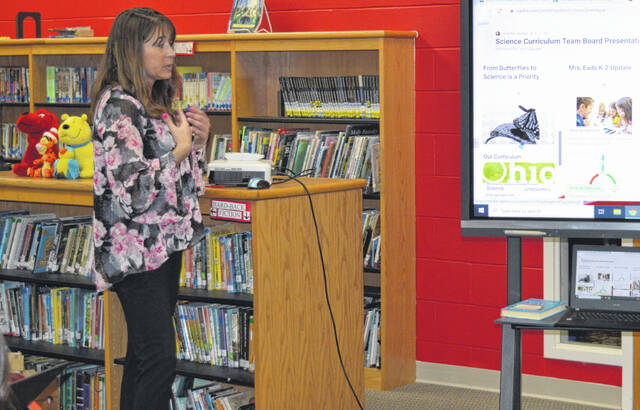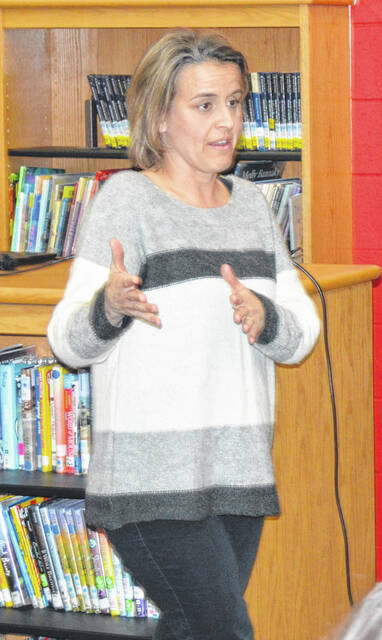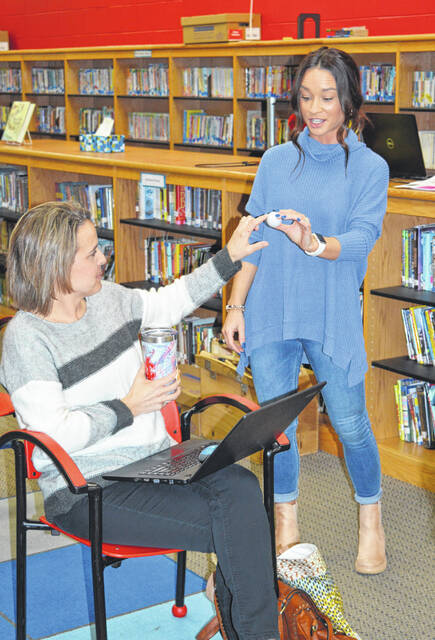


ADAMS TOWNSHIP — Clinton-Massie this month held a Transition Fair to better prepare high school students with various disabilities for their eventual passage outside the school setting.
Some 15 to 18 families and their sons or daughters attended the event to learn what they can do during high school to get ready for life after high school.
The Transition Fair included representatives from both the Clinton County and the Warren County Developmental Disabilities (DD) Services organizations, as well as reps from area education institutions and a couple local employers.
“The reason for this event is really there are so many different options out there for students with disabilities as they start to transition,” CM Special Education Director Betsy Muterspaw said in a Monday report to the school board.
Clinton-Massie students who have an IEP (Individualized Education Plan) and who are 14 and up already have transition services as part of their IEPs.
“So with that, we look at interests; we look at their preferences; we look at what their strengths are; then we also look at needs,” said Muterspaw. Satisfying that last component led to putting together a Transition Fair, focusing this first year on high school students who have some kind of IEP supports.
The Great Oaks Career Campuses representative talked about some of their programs for high school juniors and seniors.
Muterspaw reported, “I had several of the ninth-graders’ parents say they didn’t realize that was an option, so that was exciting.”
There also are options for students in the midst of their transition from high school: Oaks has programs called “23s” which are for some students after graduating 12th grade to stay a while longer in a school setting, she said. That includes “Career X” at Laurel Oaks.
Project Search with Warren County was represented at the Transition Fair. Project Search is a program after the 12th grade for students with disabilities, and looks at what does this young person need to be employable, said Muterspaw.
Two colleges in the region that have education options for individuals with disabilities were at the fair — Wilmington College and Sinclair Community College in Dayton. Wright State University and the University of Cincinnati were unable to attend at the last minute, she said.
The Clinton and Warren Counties’ DD Services organizations provide services for students with a bit more significant disabilities. But those organizations can start providing their services when the child is very young, as well as all the way up through high school and then into adulthood, noted Muterspaw.
There also was a representative with Opportunities for Ohioans with Disabilities (OOD) that offers different supports for families once students are ready to start getting jobs. “Their focus is getting students out working,” she said, mentioning job coaching as an example.
Also job-related, the OhioMeansJobs service agency took part in the fair. The OhioMeansJobs.com website has a ‘Transition from High School’ section that contains information and resources for youths with IEPs. It can be accessed in the menu listed under the ‘For Students’ tab on the homepage.
The two employers present were Amazon and New Sabina Industries.
For future Transition Fairs, Muterspaw would like to have involvement from more community partners and other local school districts as well.
On another topic, two members of the science curriculum team, Mrs. Cook and Mrs. Eads, spoke to the CM Board of Education about the elementary school’s science instruction. In K-through-second-grade, they’re using a combination of Mystery Science and Perfect Picture Science curricula, said Eads.
Both approaches, she said, follow a very similar process through a lesson: Identifying the problem, then brainstorming, followed by design, then building, next testing and evaluating, and then, if necessary, redesign and rebuilding and continuing through the cycle.
Reach Gary Huffenberger at 937-556-5768.




